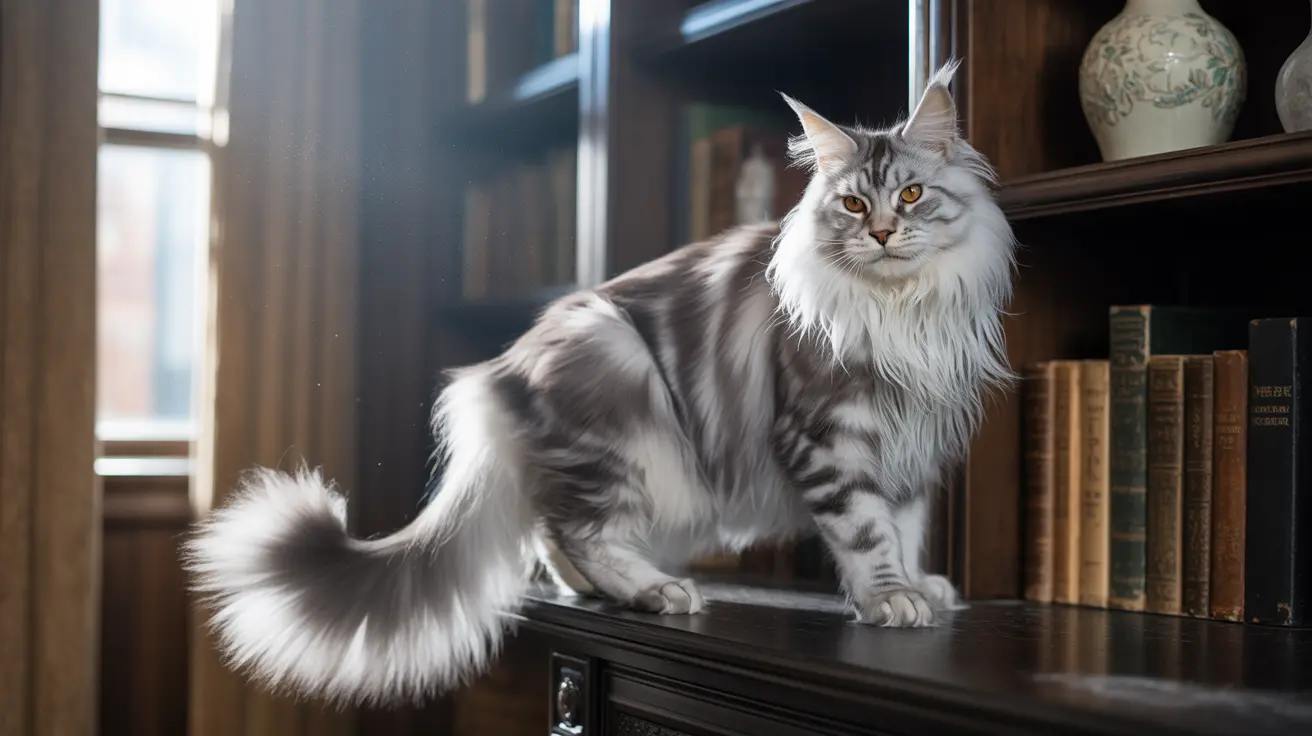For cat owners and enthusiasts alike, understanding how cats control their tails is a fascinating aspect of feline behavior. While cats generally have remarkable control over their tail movements, there are instances when their tails seem to have a mind of their own. Let's explore the complex relationship between cats and their tail movements, including both voluntary and involuntary aspects.
Understanding tail movement in cats is crucial for interpreting their behavior and ensuring their well-being. From conscious communication to unconscious reflexes, a cat's tail tells us much about their physical and emotional state.
The Anatomy of a Cat's Tail
A cat's tail is an intricate structure composed of 18-23 vertebrae, muscles, ligaments, and a complex network of nerves. This sophisticated anatomy allows cats to execute precise, controlled movements that serve various purposes in their daily lives.
The tail contains multiple muscle groups that enable both fine and broad movements, from subtle twitches to dramatic swishes. These muscles work in concert with the nervous system to produce both voluntary and involuntary movements.
When Do Cats Control Their Tail Movements?
Most tail movements are intentional and serve specific purposes. Cats consciously use their tails for balance, communication, and emotional expression. For example, an upright tail with a slight curve at the tip typically indicates a friendly greeting, while a low, tucked tail suggests fear or submission.
- Maintaining balance during walks or jumps
- Expressing emotions or intentions
- Communicating with other cats or humans
- Navigating tight spaces
- Hunting or playing
Involuntary Tail Movements Explained
There are several situations where a cat's tail may move without conscious control:
- During REM sleep, when dreaming causes muscle twitches
- In response to sudden stimuli or startling events
- When experiencing pain or discomfort
- Due to neurological conditions or injuries
These involuntary movements are typically brief and situational. If you notice persistent involuntary tail movements, it's important to consult with a veterinarian as this could indicate an underlying health issue.
The Role of Tail Movement in Feline Communication
A cat's tail serves as a sophisticated communication tool. Different positions and movements convey specific messages:
- Straight up: confidence and friendly greeting
- Puffed up: fear or aggression
- Quick lashing: irritation or excitement
- Gentle swaying: focused attention
- Wrapped around another cat or person: affection
How Cats Use Their Tails for Balance
The tail acts as a counterbalance during physical activities, helping cats maintain their legendary agility. This is particularly evident when cats:
- Walk on narrow surfaces
- Make quick turns
- Jump between surfaces
- Land from heights
- Run at high speeds
Frequently Asked Questions
Can a cat's tail move involuntarily or does it always move on its own command?
While cats have significant control over their tail movements, involuntary movements can occur during sleep, in response to sudden stimuli, or due to medical conditions. Most tail movements during waking hours are intentional.
What do different cat tail movements signal about their mood or health?
Different tail positions and movements indicate various emotional states. An upright tail usually signals happiness or confidence, while a puffed tail indicates fear or aggression. Unusual tail movements may indicate health issues requiring veterinary attention.
Why does my cat's tail twitch during sleep or when they're resting?
Tail twitching during sleep is usually associated with REM sleep and dreaming. This involuntary movement is normal and similar to how humans might twitch while dreaming.
How does a cat's tail help with balance and movement?
A cat's tail acts as a counterbalance during physical activities, helping them maintain equilibrium when walking on narrow surfaces, jumping, or making quick turns. It's essential for their agility and coordination.
When should I be concerned about unusual or persistent tail twitching in my cat?
Consult a veterinarian if you notice persistent involuntary twitching, unusual tail positioning, or if your cat shows signs of pain when their tail is touched. These could indicate underlying health issues requiring medical attention.
Conclusion
While cats possess remarkable control over their tail movements, understanding both voluntary and involuntary aspects helps us better interpret their behavior and health status. By observing tail movements in context with other body language, we can better understand our feline companions and respond appropriately to their needs.






